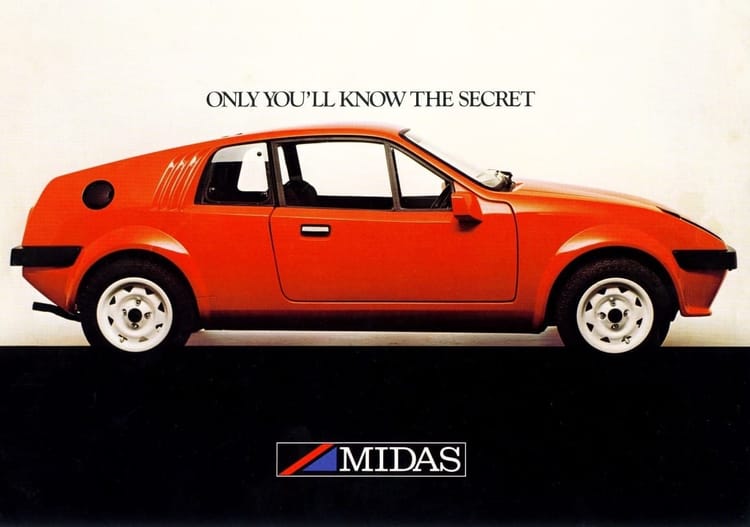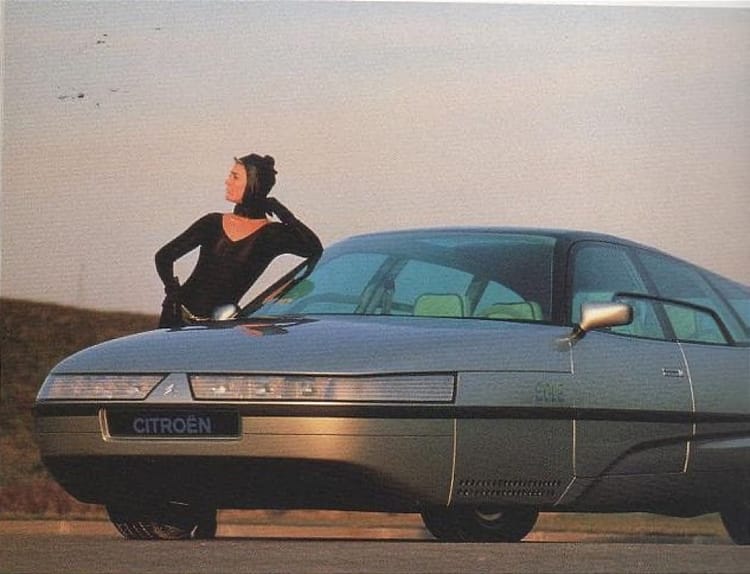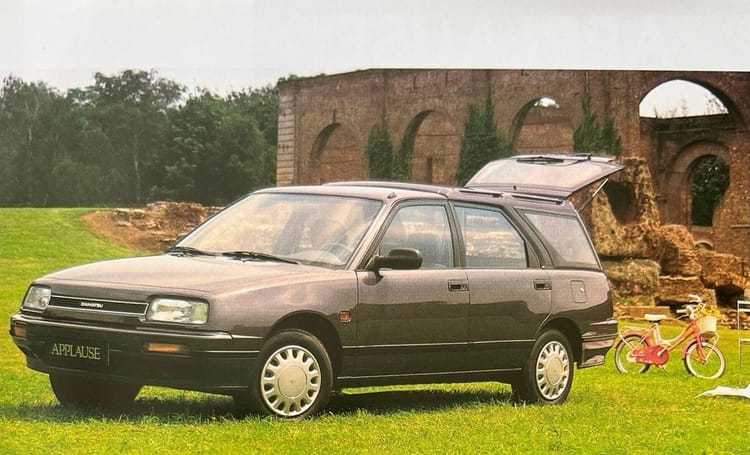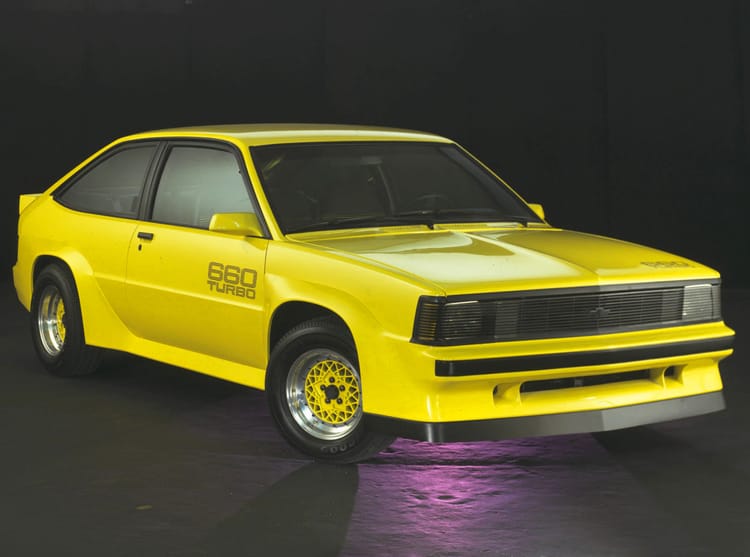Seat Panda Papamóvil
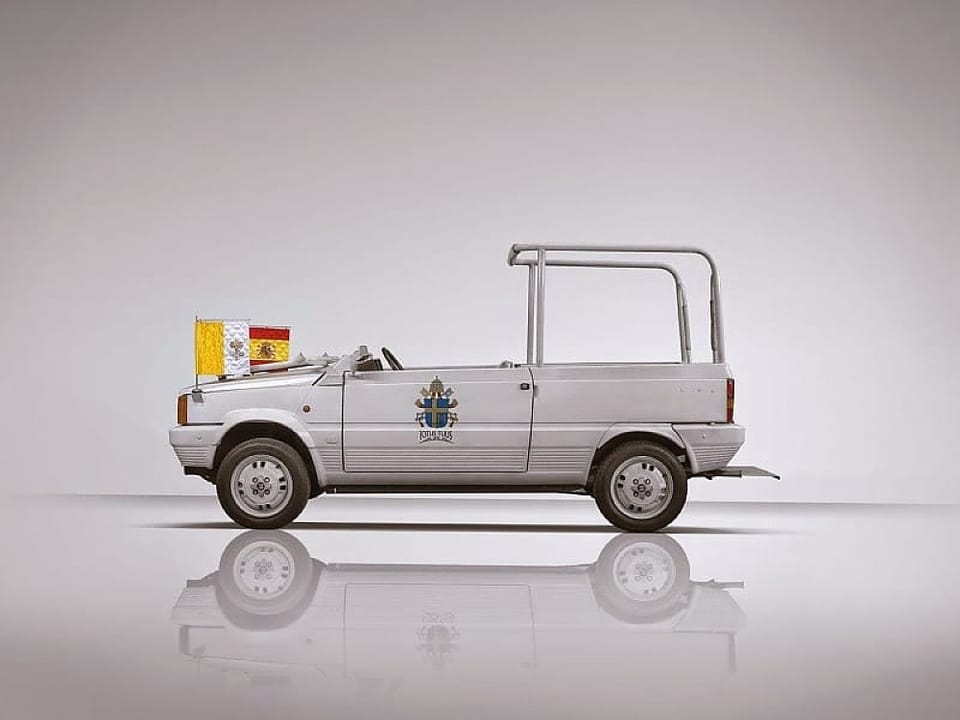
Used most notably for only one event, inside of a stadium, an open-topped Seat Panda Papamóvil (itself based on the Fiat Panda) whisked Pope John Paul II through a congregation of more than 120,000 worshippers in Barcelona.
Where? At the gigantic Camp Nou stadium, still home to the FC Barcelona football club. Community is where you make it (and take penalty kicks).
Brief diversion: Pope John Paul II’s gangster black Lancia Thesis gets my vote for the most attractive Popemobile, but it’s terrible PR to ride, glide, and hide in magnesium centre console’d opulence while among less blessed worshippers. Look it up.
A Toyota Mirai hydrogen car? And that, uh, Fisker Ocean that Pope Francis wanted? True stories. (See below.)
To me, only a humble car will do. Only a car with little ego, little power, and little to do outside of carry regular people’s regular things on regular trips until it rusts away into nothing.
Like a Eucharistic host, the Popemobile should dissolve into nothingness when placed on one’s tongue.
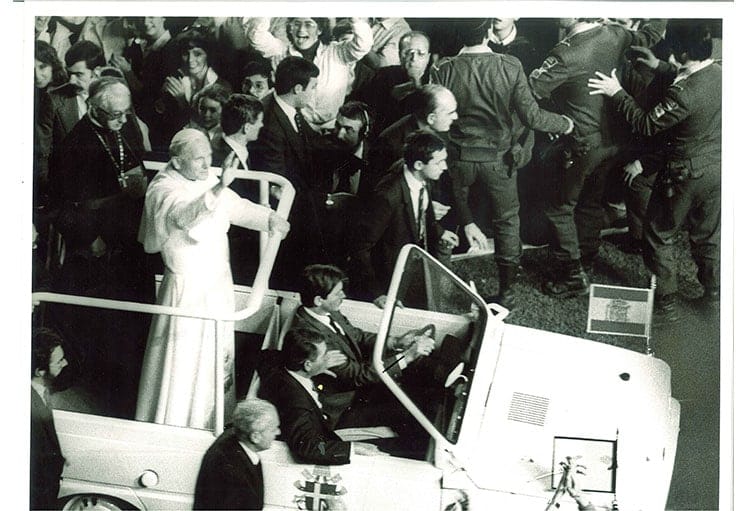
Economy cars are always and forever the best Popemobiles, you can’t change my mind on this. Example time.
This once regular car, built at the Zona Franca SEAT factory that could then trace its roots back 30 years (now 72 years), was then treated to a haircut and, suitably for the enrobed guy waving blessings around, a “Popes Only” role cage — I guarantee nobody has given sermons on Mount Panda since.
With the selection for a new Pope now underway after Pope Francis’ death earlier today, I can only hope that future spiritual leaders err on the side of modest when choosing their next car(s).
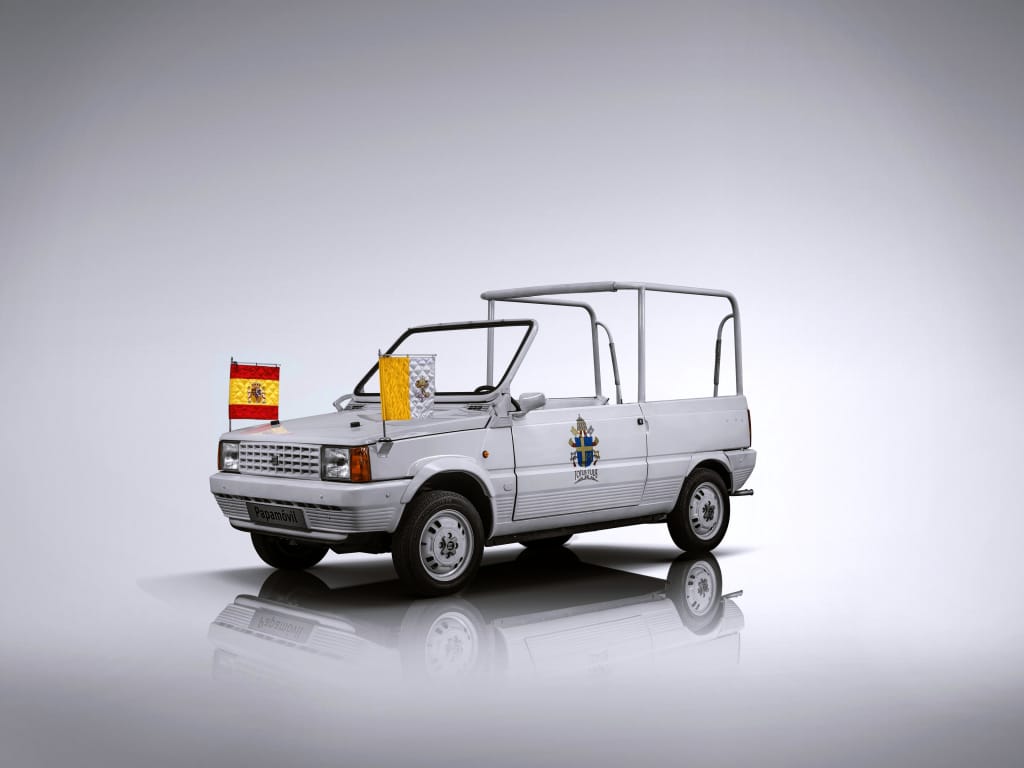
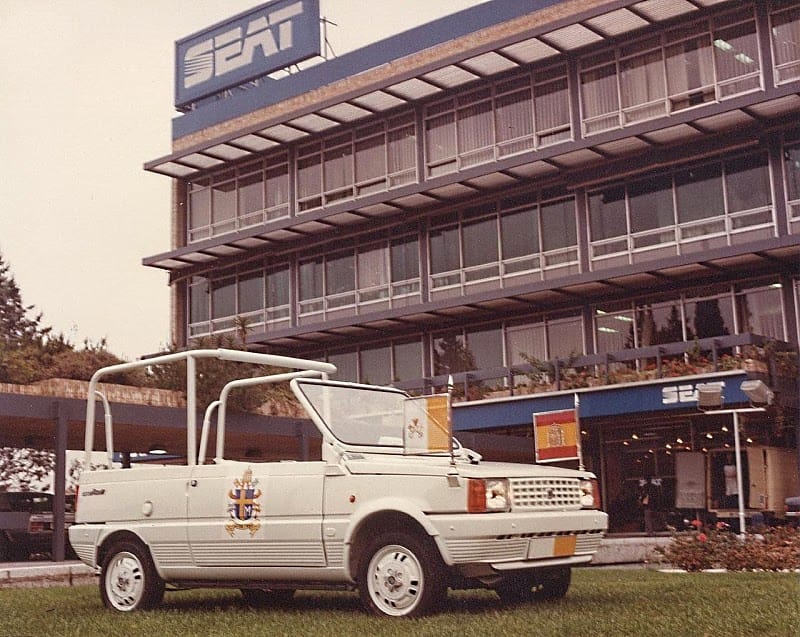
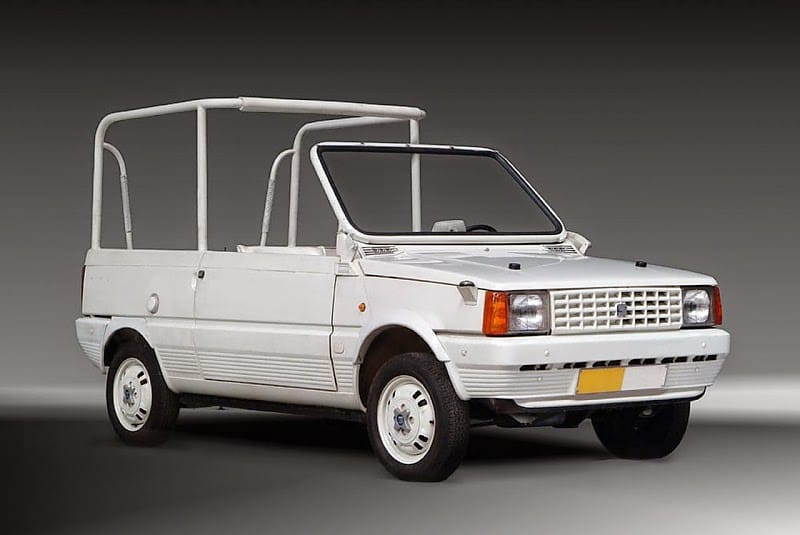
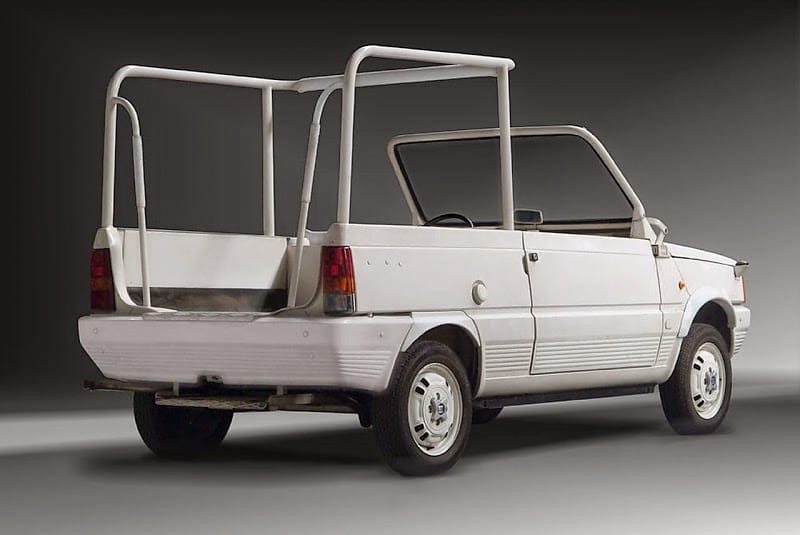
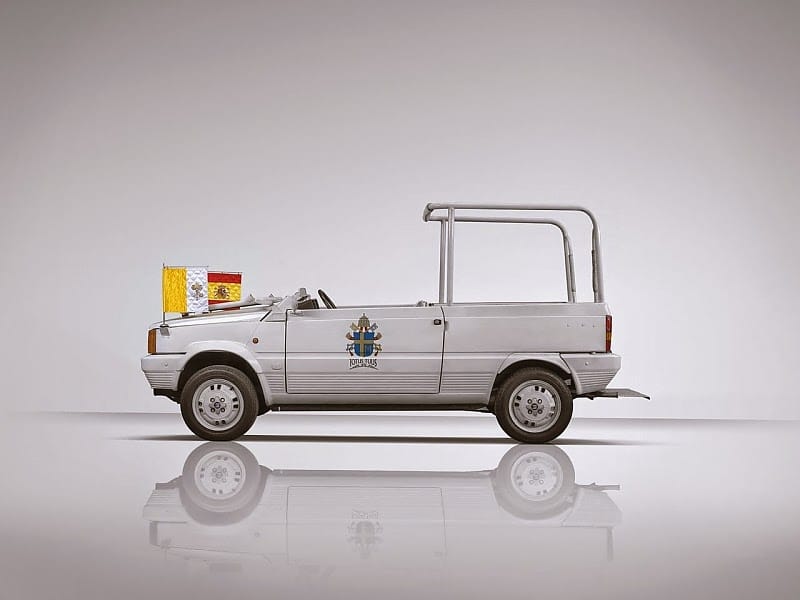
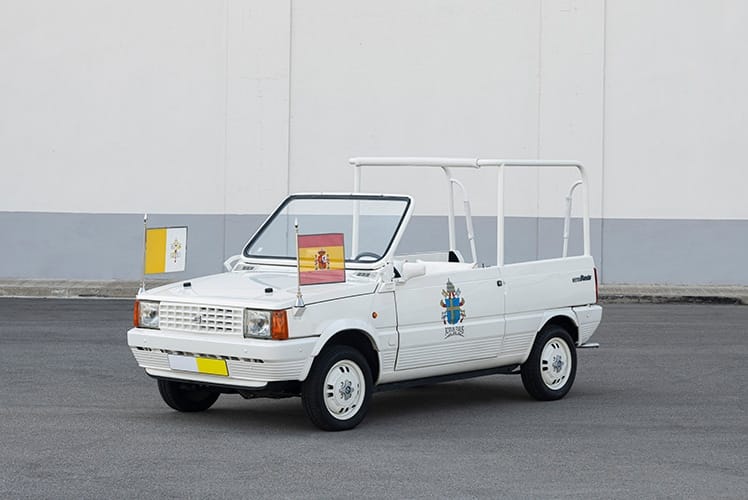

Honest-to-goodness PR photos for the SEAT Panda Papamóvil • SEAT
It may seem silly to dote on the Pope’s car(s), however, as the Vatican does not as of this writing use a private jet (it employs ITA Airways charter jets for longer flights), its fleet of ground vehicles (and the ones it retains) is relatively modest for someone with so many Instagram followers.
Here, a request for a stadium-sized car was made, it was built, SEAT got great PR, and got to keep the car.
Official specifications from SEAT
Engine | Petrol, 4-cylinder inline |
Engine config. | Front-mounted transverse |
Bore/stroke, mm | 65/68 |
Displacement, cc | 903 |
Max. power | 45 PS @ 5,600 rpm |
Compression | 9:1 |
Top speed | 138 km/h |
Average fuel consumption | 6.1 l/100 km |
Fuel supply | Weber 32 LEV 28 carburettor |
Transmission | 5-speed manual |
Drive | Front-wheel drive |
Suspension | Front: independent suspension with single wishbones and coil springs, telescopic dampers Rear: beam axle with leaf springs, telescopic dampers |
Tyres | 145/70 SR 13 |
Brakes | Disc brakes front; drum brakes rear |
L x B x H in mm | 3,380 x 1,460 x 1,700 |
Weight in kg | 695 |

